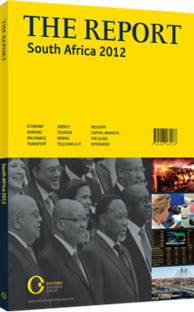OBG talks to Peter Matlare, CEO, Tiger Brands

Interview: Peter Matlare
How competitive is South Africa’s fast-moving consumer goods (FMCG) industry in the global market?
PETER MATLARE: In recent years, we have seen an intensification of globalisation strategies implemented by multinational consumer brands. Coordinated supply chain sourcing and global procurement strategies have led to more competitive pricing of international products in the local consumer goods market, while the favourable exchange rate and rise in own-brand products has led to imported finished goods being marketed under retailer labels at a lower price.
There is therefore an increasing need for local producers to benchmark themselves against the costs of global producers and finished goods imports. However, South Africa has underinvested in recent years in electricity and logistics infrastructure, which has led to dramatic increases in local transportation and energy costs. Combined with higher-than-inflation wage increases, these pose major challenges for South African manufacturers in terms of competitiveness. There are also a number of indirect costs associated with tariff negotiations and regulatory frameworks.
If things remain as they are, many more of the country’s traditionally strong manufacturing industries will go the route of our nearly defunct textile industry. The government, at some point, needs to decide how it wants to shape the country. Can a developing economy looking to compete with places like China, Mexico and Turkey for manufacturing jobs truly sustain Swedish-type labour policies? Do we want to open our market to cheap rice imports from countries that do not reciprocate when it comes to allowing us to export our commodities to them in exchange?
Finally, the Gini coefficient must be addressed, and the best way to do this is by enabling pure economic growth, not artificial and unsustainable interventions.
What can be done to best attain food security?
MATLARE: Amidst population growth, industrialisation and climate change, food security is a global – and not just South African – concern. If one defines food security in the purist sense – the ability of a country to grow all of its own food – then a cornerstone must be a strong commercial farming sector that continues to be competitive and attracts investment. Much of the headache currently facing EU member states such as Greece has been predicated on the heavy subsidies provided to their agriculture sectors and small farmers based on domestic political sensitivities.
In my opinion, artificially supporting an industry is not a sustainable approach and these countries are today paying the price. Food security should not be solely about whether all food consumed can be grown domestically, but about the affordability of that food, as prices are driven by a number of other factors in the value chain, ranging from energy costs to logistics.
How can consumer goods be targeted more effectively at the low-income market segment?
MATLARE: Those with limited disposable incomes want to be assured that products purchased will provide the functional benefits sought. They tend to be less risky and have a smaller brand repertoire, sticking to products that are tried and tested. At the same time, media and advertising reaches a wide variety of people and research shows that consumers tend to be aspirational by nature, regardless of income level.
Something that must be corrected is that while the so-called bottom-of-the-pyramid group have clear limitations in terms of affordability, the goods available in small rural outlets are often priced higher because of the long route to market. It is imperative for FMCG marketers to find solutions that make our leading brands more accessible. To do this, producers must find innovative package and product formats, and expand distribution capabilities to reach these markets in a more cost-efficient manner. Fortunately, the expanding footprint of major chain retailers and wholesalers is increasingly providing greater access to a wider range of goods, at more affordable prices, in these market segments.
You have reached the limit of premium articles you can view for free.
Choose from the options below to purchase print or digital editions of our Reports. You can also purchase a website subscription giving you unlimited access to all of our Reports online for 12 months.
If you have already purchased this Report or have a website subscription, please login to continue.

